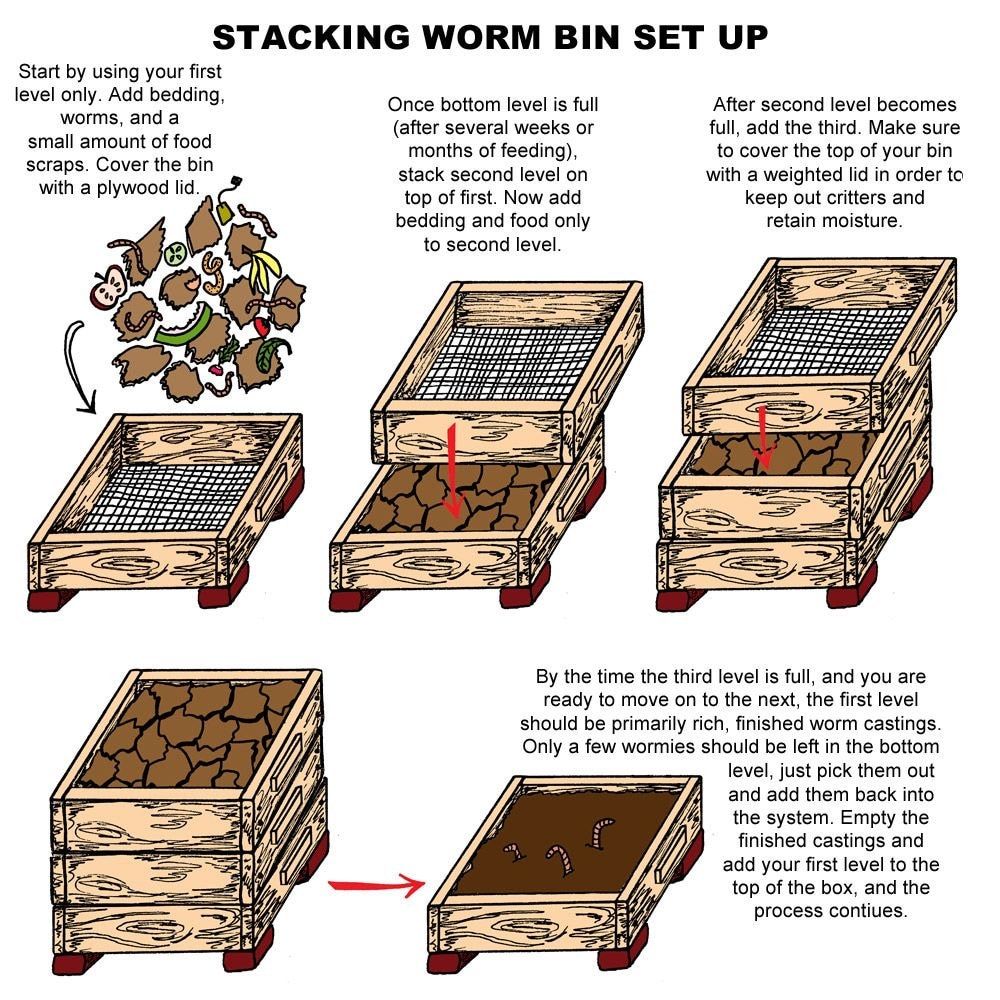“A simple, tiered vermicomposting system that saves space, reduces waste, and produces nutrient-rich worm castings for healthier soil.”
🔹 Step-by-Step Process
1. Start with the First Level
- Add bedding (shredded paper, cardboard, or coconut coir), worms, and a small amount of food scraps (like fruit peels, veggie trimmings, or coffee grounds).
- Cover the bin with a plywood lid to keep in moisture and block light.
👉 This is where the worms start working, eating scraps, and producing worm castings (black, crumbly, soil-like fertilizer).
2. Add the Second Level
- After a few weeks or months, once the first bin is nearly full, stack the second bin on top.
- Add fresh bedding and food only to the second bin.
- Worms naturally migrate upward through the mesh to reach the new food.
👉 The bottom bin continues breaking down scraps while worms slowly move up.
3. Add the Third Level
- Once the second bin fills up, add a third level on top.
- Cover with a weighted lid to keep critters out and moisture in.
👉 Now you’ve got a three-tier system in action!
4. Harvesting the Castings
- By the time the third level is full, the first level is finished.
- The material inside should be mostly worm castings (rich, natural fertilizer).
- Pick out any worms left and put them back into the system.
- Remove the castings and re-stack the empty first bin on top to restart the cycle.
👉 This rotation keeps the process continuous without disturbing the worms too much.
🔹 Why This System Works So Well
- Continuous Cycle → Always producing castings while worms migrate upward.
- Space-Efficient → Vertical design makes it compact for small homes, balconies, or gardens.
- Natural Fertilizer → Worm castings are one of the best soil amendments, boosting plant growth.
- Less Smell & Mess → Each level contains scraps neatly, preventing odor and pests.
- Eco-Friendly → Diverts kitchen scraps from landfills, reducing methane emissions.
🌍 Everyday Impact
Imagine a family using this system in their kitchen or backyard:
- Instead of throwing out banana peels, coffee grounds, and veggie scraps, they feed them to the worms.
- In a few months, they harvest rich compost for their garden, potted plants, or even urban farms.
- Waste goes down, plants grow healthier, and the cycle keeps repeating — nature’s recycling system at work.
✅ In short: A stacking worm bin is like having a mini compost factory at home — worms do the hard work, you just feed them scraps and collect the “black gold” they leave behind.
